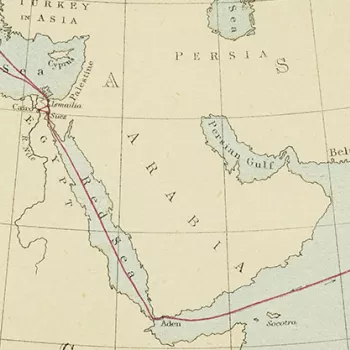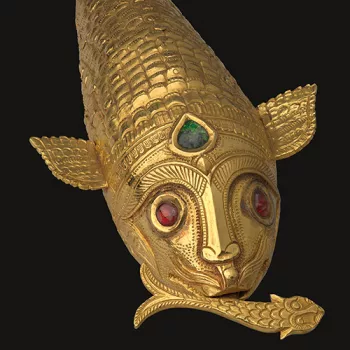Dagger and scabbard 1877
Gold, enamel, steel, pearls, diamonds, wood and velvet | 40.6 x 4.5 x 3.7 cm (whole object) | RCIN 11289


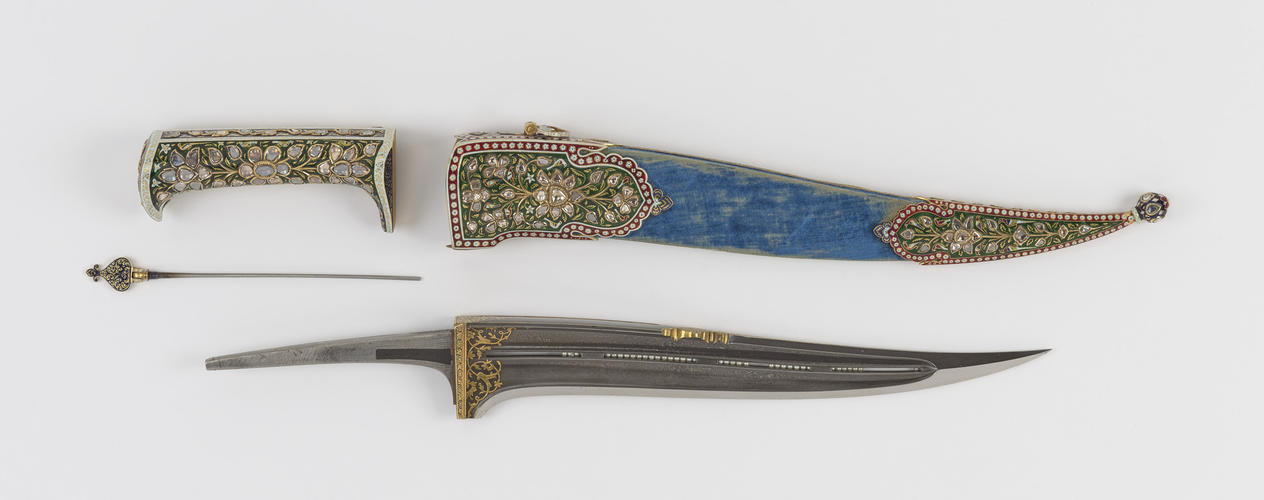
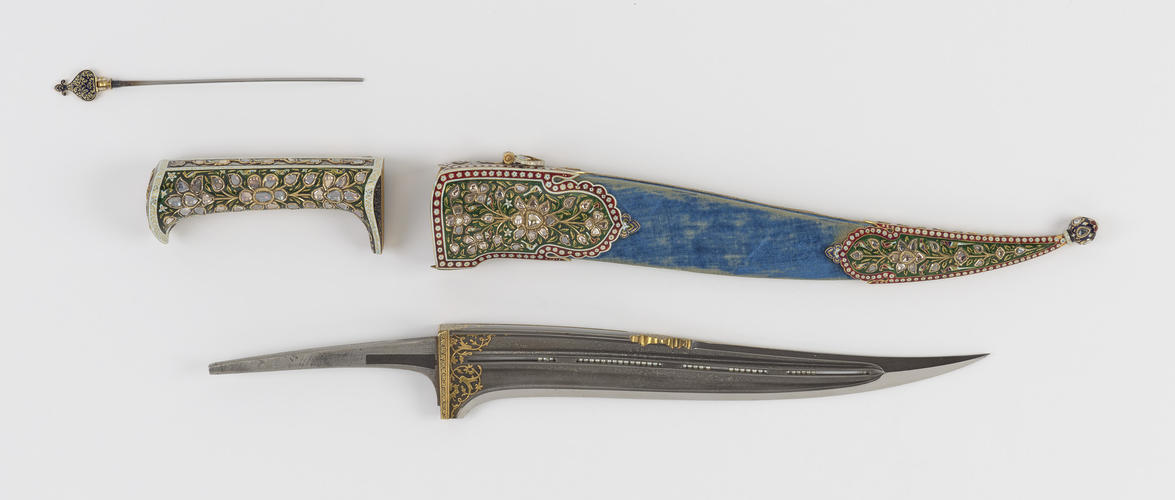

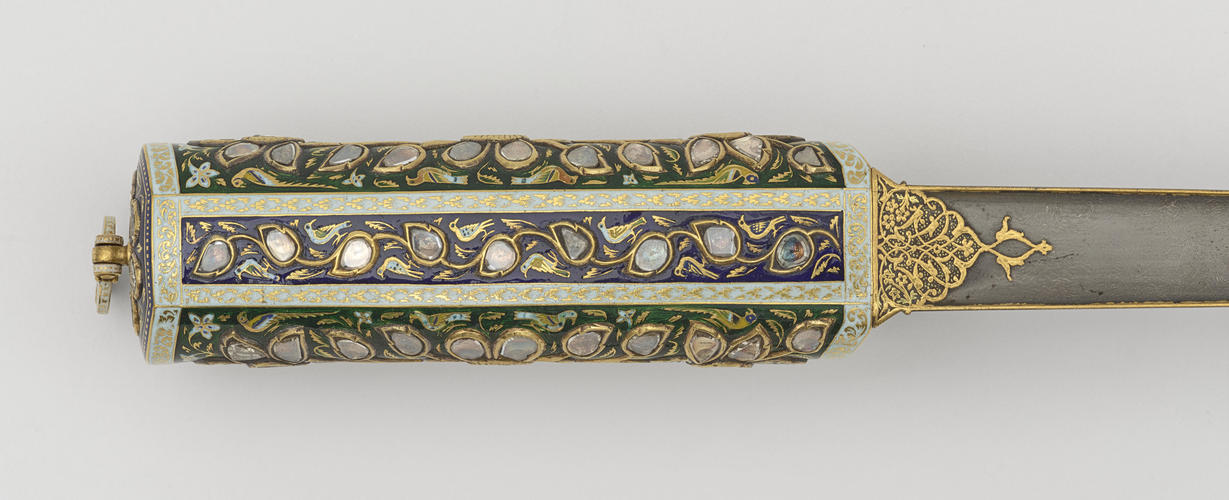

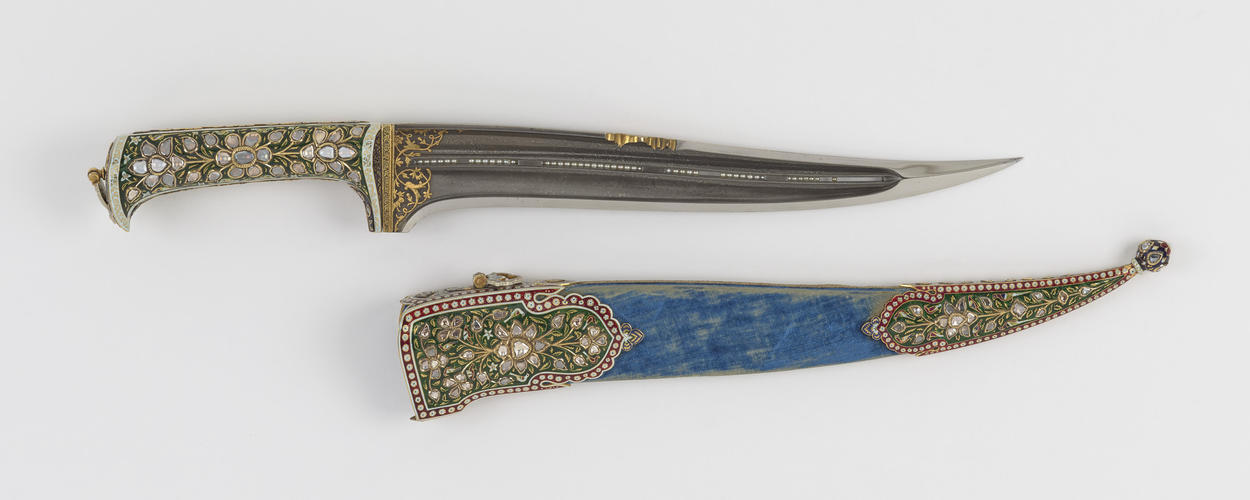
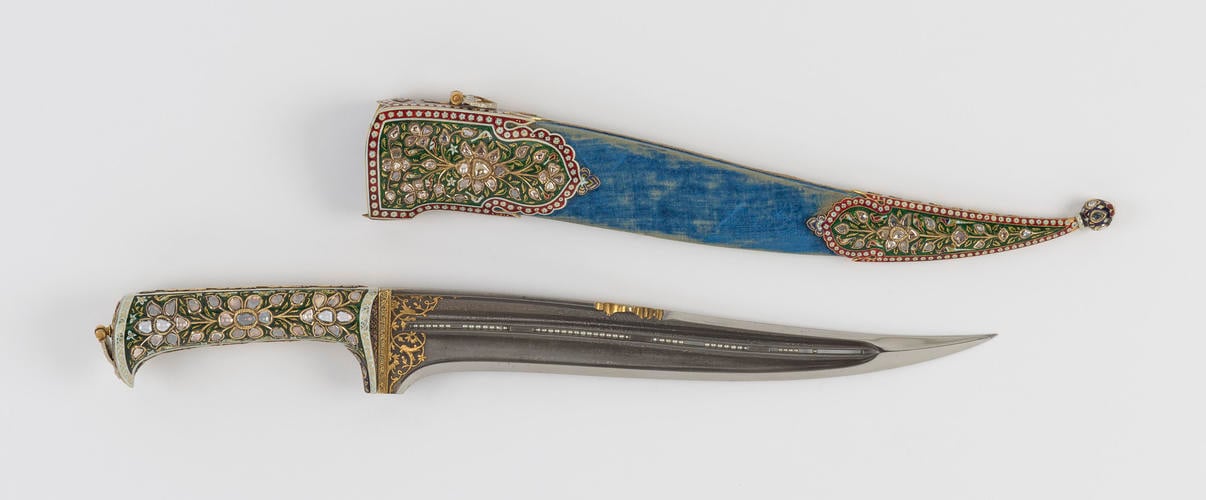
-
A dagger or peshkabs with a two edged watered crucible steel blade thickened point and broad back ending half way along the top edge with a cut cartouche. The centre of the blade has a curved channel to reveal loose pearls that move along the passage when the dagger is tilted. The blade is further embellished with arabesques and floral motifs overlaid with three different alloys of gold to subtly vary the colour. The cartouche overlaid with a Persian inscription reading 'Work of Ibrahim, 1877'.
The dagger hilt and scabbard mounts are made of gold, enamelled with flowers and birds in white, blue, green and red enamel. The enamelling probably undertaken by craftsman based in Alwar, Rajasthan. The hilt has a hinged finial that can be unscrewed to reveal the rod that fits through the length of the hilt and holds the loose pearls in place. This dagger is remarkable for its ingenious blade and craftsmanship and is technically admirable in the fact that the bore follows the curve of the blade.
Provenance
Presented to King Edward VII, when Prince of Wales during his tour of India in 1875-76. In Indian Art at Marlborough House (1898), the donor of the dagger is recorded to be Jashwant Singh, Maharaja of Bharatpur. However the '1877' inscription recorded on the dagger suggests that the dagger was presented to the Prince once he had returned to England. Contemporary newspapers and letters record that a dagger which was a 'specimen of Ulwar steelwork - with seed pearls in the blade' was brought to Marlborough House, the Prince of Wales's London residence, by Colonel Thomas Cadell, the British Resident at the court of Alwar in July 1877. The Prince organised for the dagger to be exhibited at the Bethnal Green Museum (now Victoria and Albert Museum of Childhood) with the rest of his Indian gifts.
The rulers of Alwar appear to have been great patrons of the swordsmith 'Ibrahim' and are recorded to have exhibited swords and daggers designed by him with open channels for free-moving pearls at the Colonial and Indian Exhibition (1886) and the Delhi Exhibition (1903).
-
Creator(s)
(bladesmith)Acquirer(s)
-
Medium and techniques
Gold, enamel, steel, pearls, diamonds, wood and velvet
Measurements
40.6 x 4.5 x 3.7 cm (whole object)
Category
Object type(s)




